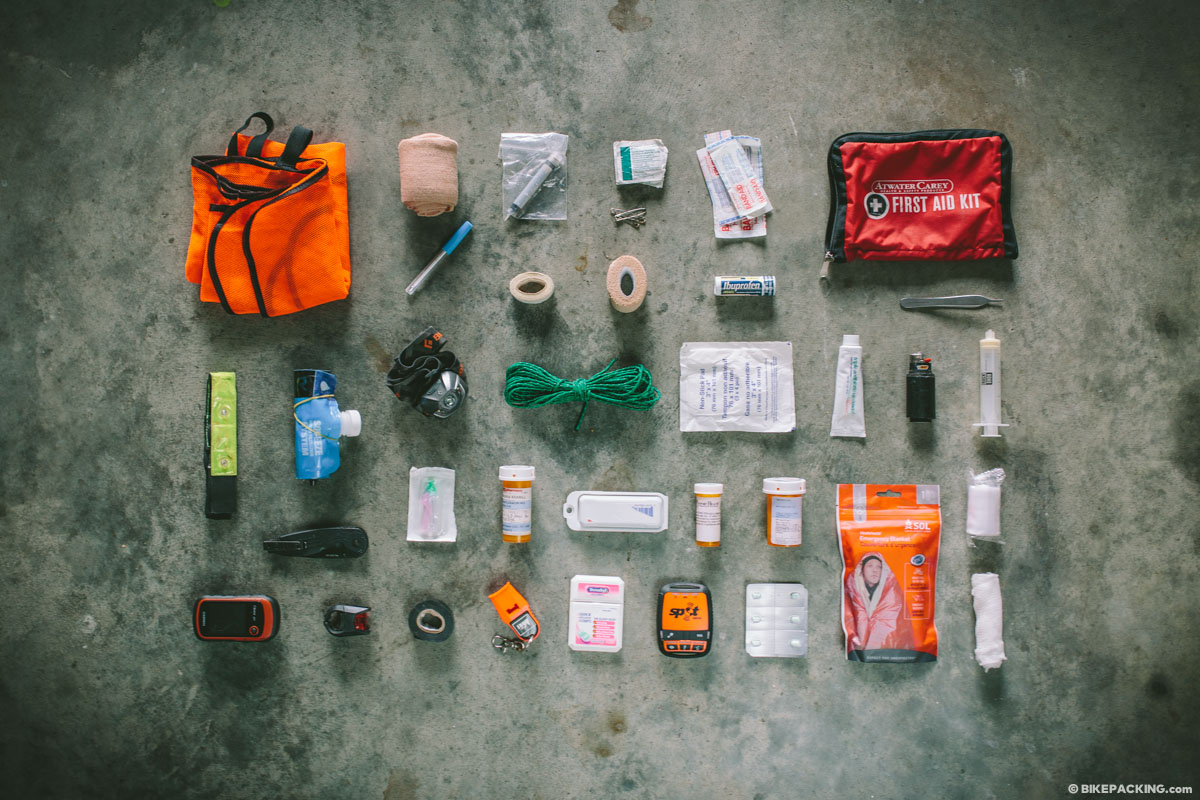There are a couple of things that aren't in your typical first-aid-kit that are nonetheless useful to bring along:
Notepad and pen. This one is real important and also pretty obvious. Most of us don't have a huge amount of experience, thankfully, with medical emergencies. Being able to write everything relevant down before calling 911 is pretty valuable in itself and will make sure you get all the information to the 911 folks. Also, if you can't reach 911 where you are you can give your notes to another cyclist or a passing car and have them go someplace where they can call 911 (in this case the written description is even more important). It is also a good place to record vital signs (like pulse and respiration) and collect a patient's medical history.
Ace bandage or similar. These are super-useful. Since ankle and knee injuries are fairly common cycling ailments, and in cases of minor injury an ace bandage may make a leisurely self-rescue possible rather than a full-on evacuation. They also can be used as improvised
cravats. There are also some cool ones that stick to themselves, though they are not reusable.
Bandanas. They are useful as
cravats and have numerous other uses both in emergencies and not.
Ibuprofen. Not the couple of tablets in any first aid kit, but a small bottle with a couple of dozen tablets. You might also talk to your doctor and see if they will write a prescription for some serious horse pills (800mg or 1000mg ibuprofen).
Athletic tape. This is handy for holding wound treatments in place, and for taping spots where things are chafing (and if you ride far and fast you will find that, at some point, you will chafe most anywhere).
Soap. While there are various tinctures and glops and gels with antibiotic properties, plain old soap goes a long way and does less damage to the delicate tissue in a wound. Find a
tiny squeeze bottle and put some Ivory Liquid or Dr. Bronner's soap in it.
Electrolytes. If you do bonk out and get seriously dehydrated, you've probably blown out on electrolytes too. They can also be enormously helpful for treating cramps. In a pinch pickle juice or little packets of mustard also treat cramps.
Nuun and
Hammer Endurolyte are good brands. The fizzy tablets don't foul up water bottles.
Treatment for saddle sores. There are various products out there and when you need them, you need them badly. Vaseline from the baby section of a grocery store also works.
